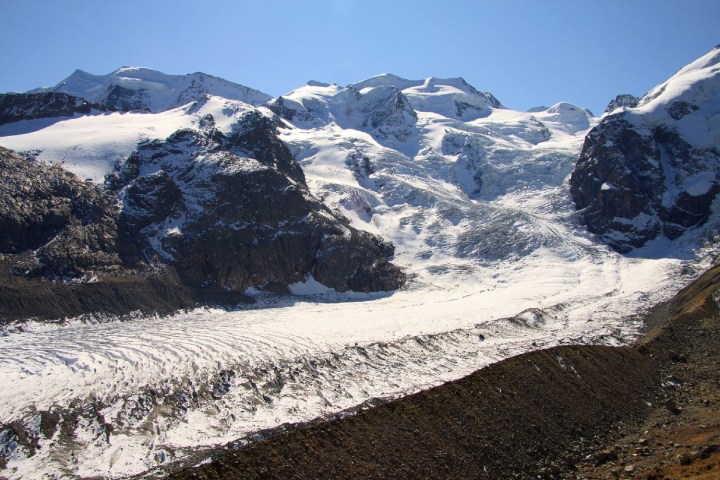
Specifically, the ambition is to come up with a way to help save the Morteratsch Glacier in Switzerland, which is currently losing between 100 and 130 feet in length each year. The Morteratsch glacier is a popular tourist destination, and is reportedly the only glacier that can be reached by wheelchair: demonstrating just how accessible it is.
“This is one of the most frequently visited glaciers in Switzerland, but it’s receding at an incredibly fast rate,” Professor Johannes Oerlemans of Utrecht University in the Netherlands told Digital Trends. “This is where our preparatory study comes in, with the goal of seeing if there’s a way to stop the glacier’s retreat.”
Working with Dr. Felix Keller of Switzerland’s Academia Engiadina, Oerlemans suggests that one way to slow the melting of the glacier would be with the aid of masses of snow machines.
“We looked at various ways of trying to keep the glacier frozen, but the only possibility we see that may be feasible is to try and keep it covered with snow during the summer,” he continued. “Because you can make snow much faster than it melts, we think we can keep it covered with a white surface throughout the summer — with the snow simply protecting the ice to keep it from melting.”
The advantage of the artificial snow is that it would reflect sunlight, while hopefully allowing the glacier the chance to grow back. The project was recently presented at the annual meeting of the European Geosciences Union in Vienna, Austria, in late April.
It’s certainly an original idea, and to examine whether it works a pilot project funded by locals is currently underway. This pilot project involves testing the technology on a small artificial glacier at the foot of the Diavolezzafirn glacier. If this works, Oerlemans and Keller’s idea can then be put forward to officials more seriously.
This won’t necessarily be easy, though. As Oerlemans told us, the cost of such a project would be immense. “It will be huge, in the region of tens of millions of Swiss francs,” he said. “If you want to cover a glacier area of half a kilometer you would need about four to five thousand snow machines.”
Editors' Recommendations
- Elon Musk announces $100M prize for carbon-capture technology contest
- Gamers in the U.S. create as much carbon dioxide as 5 million cars, study says
- Why are people striking because of climate change? Here’s a summary
- Changing some code on YouTube could help lower its carbon footprint


